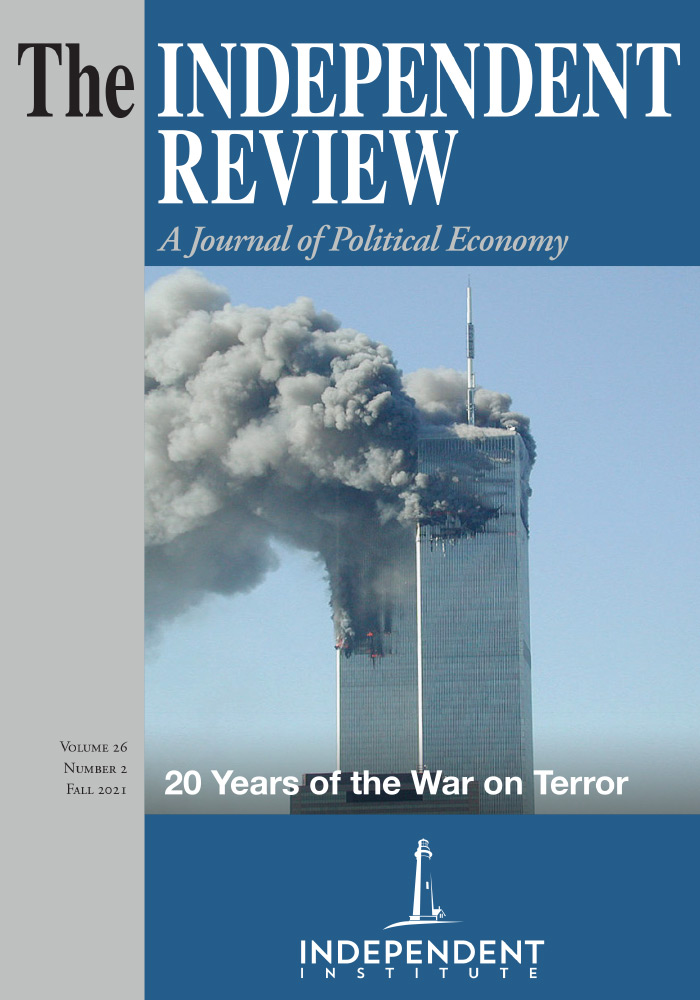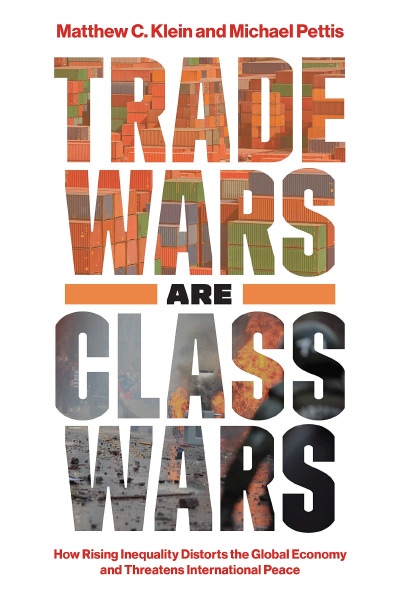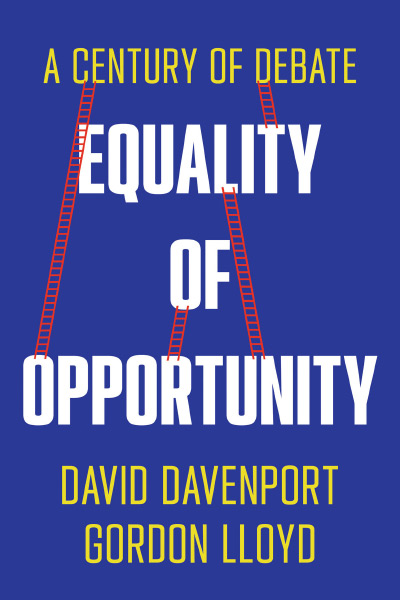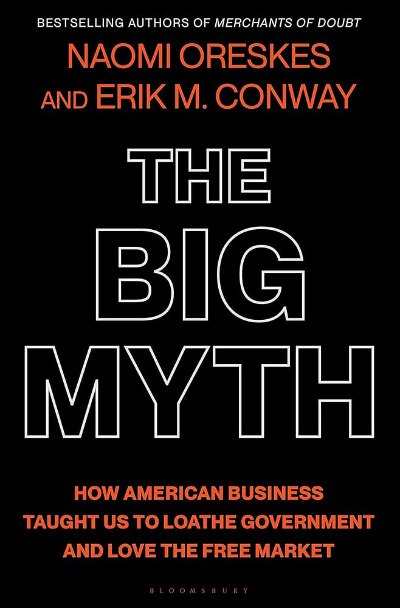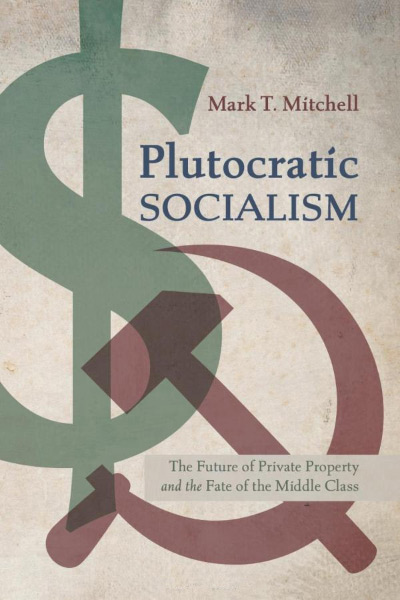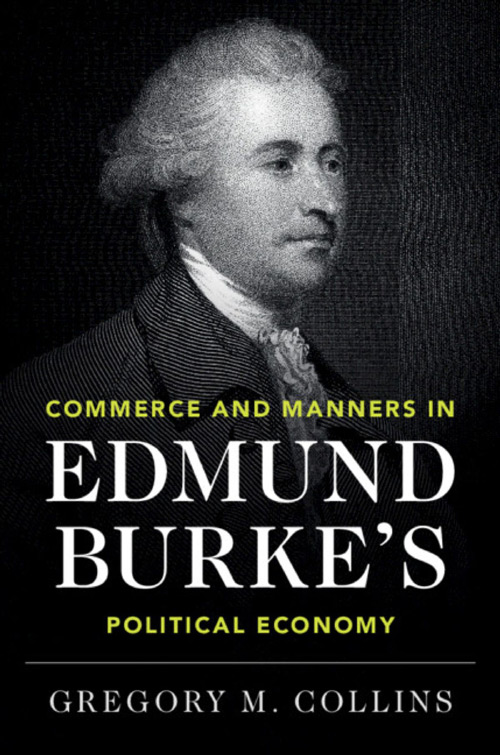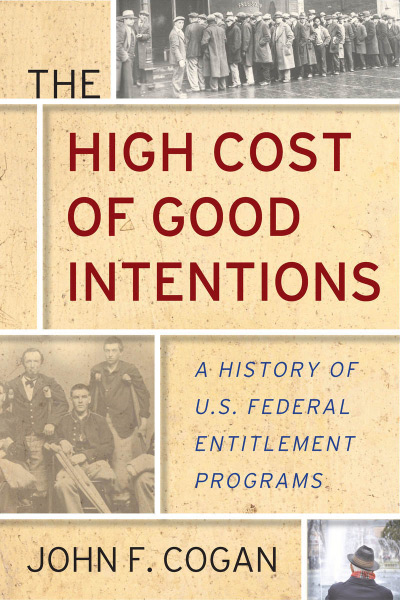A confession: When authors preface their book by favorably quoting the proto-Keynesian underconsumptionist John Hobson, I become immediately biased against the contents of the pages that follow. But accepting the assignment to review the book imposes on me a special obligation to cast such a bias aside. I did so. I really did. But in the end the bias would have proven justified.
Trade Wars Are Class Wars has a few good moments, as when the authors expose the errors that underlie Peter Navarro’s fear of the U.S. trade deficit with China. But what readers get mostly is a hash of old-fashioned Keynesianism and mercantilism, flavored with milk from some modern sacred cows.
The theme is easily summarized. Rising inequality means that an ever-larger portion of income goes to the rich. Because the rich have a higher propensity to save than the nonrich, savings grow excessively as consumer spending shrinks dangerously. The resulting excess of global savings is driven chiefly by countries that run trade surpluses, such as China. Reduced consumption as a result of inequality is exacerbated by government policies—again, such as those in China—directly intended to enrich elites by taking purchasing power away from ordinary people. As a consequence, today’s global economy is glutted with production capacity that churns out excess quantities of goods year after year. The authors describe the result in words that cannot help but make any economically literate person wince: “Over the past several decades, demand for goods and services has therefore become the world’s scarcest and most valuable resource” (p. 225).
“Surplus” economies such as Germany and China force their excess savings and production on “deficit” economies, especially the United States. The consequence of this “imbalance” is economic hardship for all but the elites both in surplus countries and in deficit countries. Increasing distress of the impoverished masses in surplus countries and rising anxieties of the indebted and unemployed masses in deficit countries fuel hostility to globalization. Thus are sparked destructive trade wars.
So goes the thesis. But is it sound?
No.
It’s clear why living standards are kept artificially low in surplus countries, whose governments obstruct their citizens’ access to consumer markets and force these citizens to subsidize exports. Having to pay more for food, furniture, and fun and having to fork over more to fund favored exporters who ship subsidized wares abroad necessarily leave ordinary citizens with fewer resources for their own enjoyment. Pity these people, truly. It’s unclear, however, why the result is also lower living standards for ordinary people in countries that receive these bounties from abroad. Excess production, after all, implies that lots of stuff is being produced. Those who get this stuff surely benefit from it. (We can safely infer this conclusion to be valid from the fact that those who get this stuff voluntarily spend their own money to get it.) The fact that the benefits captured by the recipients in, say, America are likely smaller than are the costs imposed on foreigners by their own governments to make these benefits to Americans possible does not mean that these benefits for Americans aren’t real and positive.
Yet Matthew Klein (a writer for Barron’s) and Michael Pettis (professor of finance at Peking University’s Guanghua School of Management) harbor no doubt that ordinary Americans are suffering grievously as a result of America’s incessant trade deficits and correspondingly hefty inflow of savings and goods from abroad.
As evidence of this suffering, Klein and Pettis simply repeat the long-familiar trope about America’s stagnating middle class. We’re told that American “workers are still much worse off than before the 2000s” (p. 179) and that the gains enjoyed by America’s “ultra-high earners . . . came at the expense of those lower down. Americans in the bottom half of the distribution have experienced essentially no income growth since the late 1970s after accounting for taxes, inflation, and cash benefits from the government” (p. 177).
But this trope is wrong. Starting with Michael Cox and Richard Alm’s volume Myths of Rich and Poor (New York: Basic Books, 1999) and continuing through Michael Strain’s book The American Dream Is Not Dead (West Conshohocken, Pa.: Templeton University Press, 2020)—with research in between by (among many others) William Cline, Terry Fitzgerald, and Scott Winship—the evidence shows beyond any reasonable doubt that neither real median household incomes nor real wages have stagnated. (On page 42 of his book, for example, Strain presents evidence that the inflation-adjusted average real wage for production and nonsupervisory workers in the United States on the eve of the COVID-19 pandemic was about 18 percent higher than it was in the year 2000.)
Klein and Pettis are free to argue against and then to reject Strain’s and other researchers’ findings. But they are not free, if they wish to be taken seriously, to ignore these findings that are so unfriendly to their book’s thesis. Yet ignore them they do.
The authors also ignore data on the state of American industry. While reading the book, I lost count of the number of times Klein and Pettis refer to America’s “deindustrialization” as if it were an established fact. It’s anything but.
Start with the real value of manufacturing output and industrial capacity in the United States. Writing about the economy since 2008, the authors assert that the fortunes of American producers have “been even worse than in the 2000s” (p. 214)—the evidence for which, they say, is that “as of the end of 2018, manufacturing output and manufacturing capacity were both lower than at the previous peak in 2008” (p. 214).
Well, yes. The real value of U.S. manufacturing output did indeed hit its all-time high in the fourth quarter of 2007, just before the housing bubble burst (see the graph “Manufacturing Sector: Real Output,” FRED Economic Data, updated June 3, 2021). It was then 17 percent higher than it was when China joined the World Trade Organization in December 2001 (a fact that alone casts doubt on the deindustrialization thesis). Unsurprisingly, real manufacturing output then fell from the first quarter of 2008 through the third quarter of 2009—that is, through the Great Recession. But it then began to rise again. By the end of 2018, it stood only 2 percent lower than it was at its pre-recession peak. Manufacturing output did fall in 2019, in part because President Trump’s trade war restricted American manufacturers’ access to imported inputs (Aaron Flaaen and Justin Pierce, “Disentangling the Effects of the 2018–2019 Tariffs on a Globally Connected U.S. Manufacturing Sector,” Finance and Economics Discussion Series 2019-086,Washington, D.C., Federal Reserve Board, 2019).
Likewise, U.S. industrial capacity isn’t disappearing (see the graph “Industrial Capacity: Total Index,” FRED Economic Data, updated May 28, 2021). It hit its all-time peak in the first quarter of 2020, having risen steadily to that point, without a dip, since the first quarter of 2011.
Combine these facts with two others that Klein and Pettis ignore. First, the U.S. unemployment rate on the eve of the COVID pandemic was at a fifty-year low. (In January 2020, it stood at 3.5 percent.) Second, according to the U.S. Census Bureau, in 2019 the percentage of American households earning annual, inflation-adjusted incomes of $100,000 or more (in 2019 dollars) was at 34.1 percent, an all-time high (see “Historical Income Tables: Households,” last revised September 8, 2020).
The alleged “misfortune of American workers” (p. 212) is mythical. If there is a global “glut” of savings and output, it’s likely helping—and it’s certainly not harming—ordinary Americans.
Klein and Pettis complement their poor knowledge of the facts with their poor grasp of economics. Their economics is an extreme version of what used to be called “hydraulic Keynesianism.” Consider this representative passage: “The persistence of the American current account deficit can only be explained by excessive savings abroad and the U.S. role in absorbing these excess savings” (p. 214).
Throughout the book, the authors write of America “absorbing” capital and goods from abroad as if America were attached to other countries by a series of tubes through which flow savings and goods. When China and other countries save too much and produce more than their citizens are willing to consume, the excess must flow somewhere. As the theory goes, for a variety of reasons—not least of which is the dollar’s role as global reserve currency—most of this excess is pumped into America, and we Americans are forced to “absorb” all that is pumped onto our shores.
Poor us, having to “absorb” year after year after year lots of capital and goods from foreigners.
Nearly completely absent from the analysis are microeconomic factors that better explain the persistence of U.S. current-account deficits. Despite its imperfections, the United States remains an attractive place for foreigners to choose to invest—an attractiveness that undoubtedly prompts foreigners to choose to save more than they would otherwise. Similarly, the production of tradable goods outside of America is done largely because non-Americans—led by price signals and the desire to earn profits—choose to produce the goods that they then choose to export.
Also at work, of course, are choices made by individual Americans. Every asset sold by an American is one that an American chooses to sell, presumably because the price is right. Similarly, every import purchased by an American is one that an American chooses to purchase, presumably because the price is right. To write, as Klein and Pettis do throughout, of the level of savings rising largely because of rising income inequality—and of savings, imports, and exports flowing from country to country as if they were akin to hydraulic fluids mindlessly moving from higher-pressure to lowerpressure locations—is not to do serious economics. It’s merely to give the appearance of doing economics.
The global trading system does have many problems, including mercantilist policies pursued by both Beijing and Washington. But such policies, contrary to Klein and Pettis’s assertions, are problems largely for the countries that practice them. If there is excess production in China, that’s mostly a problem for the Chinese, not much for people outside of China. If there are excess savings in Germany, that’s a problem for the Germans, not for people outside of Germany.
But recognition of this reality is rare. Klein and Pettis are not much more sophisticated in their understanding than are the economically ill-tutored masses who cling to the fallacy that imports are harmful if they are consistently greater than exports. Such people cannot get their heads around the fact that home-country resources released by imports from particular lines of production do not have to be used to produce exports in order to be put to other productive uses.
Reading the Klein and Pettis volume not only reveals that Romper Room Keynesianismremains fashionable but also reinforces my long-held belief that the world would be a much better place had no one ever thought to measure international trade flows. A world without international trade accounts would be one with less excess production of economically uninformed books.
| Other Independent Review articles by Donald J. Boudreaux | ||
| Spring 2020 | Today’s Relevance of Adam Smith’s Wealth of Nations | |
| Fall 2015 | Thomas Piketty’s Flawed Analyses of Public Debt and Executive Compensation | |
| Winter 2014/15 | Mass Flourishing: How Grassroots Innovation Created Jobs, Challenge and Change | |
| [View All (10)] | ||

